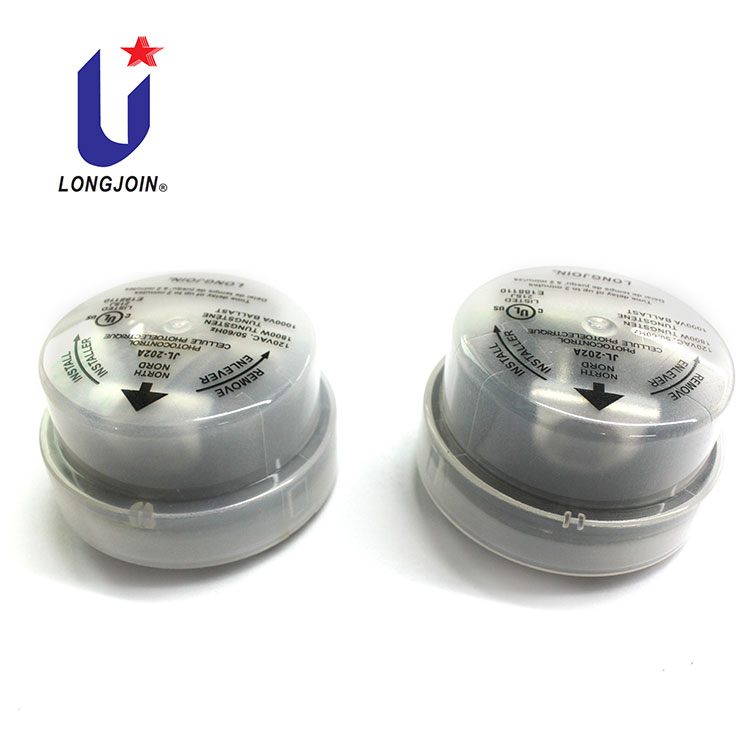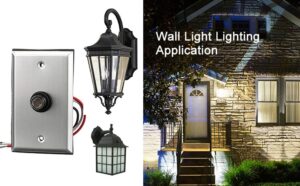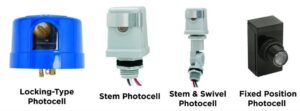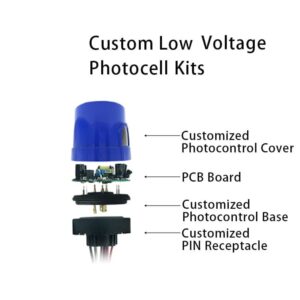Explorando fotocélulas de junção longa: tipos, características e suas diversas aplicações na iluminação moderna
Introduzir
Modern cities need more than lighting. Bright bulbs and energy-efficient LEDs aren’t enough. In today’s lighting, the photocell is the quiet hero. This small, strong part tells lights when to switch on and off automatically each day. Without it, streetlights waste power. Buildings glow unnecessarily during the daytime when they shouldn’t. Hitting smart city energy goals becomes much harder.
This article answers the most common questions about Long-Join photocells—their types, features, and where they shine best.

What Exactly Is a Photocell and How Does It Work?
A photocell is also called a sensor fotoelétrico. It detects changes in natural light. When daylight fades, the sensor closes the electric circuit. Current flows, and the lights turn on at once. When sunlight returns, the circuit opens. The lights turn off automatically.
This automatic light control saves energy, reduces costs, and keeps environments safe without manual switches.
Função | How It Works | Impacto na Iluminação |
Light Detection | Senses changes in natural light | Triggers lights at dawn or dusk |
Circuit Control | Opens or closes the power circuit | Ensures lights operate only when needed |
Energy Saving | Cuts power use during the day | Lowers electricity bills |
What Types of Photocells Exist Today?
Not all photocells are the same. Long-Join makes different types for different needs. Some are simple on/off. Others are smart and share data. We offer wire-in, twist-lock, and Zhaga styles to fit your fixtures. You can add surge protection, dimming, or timers. That way each site gets the control it needs.
- Phototransistors: These amplify small light signals. They are useful in street lighting outdoor systems.
- Infrared Filter Transistors: Detect specific wavelengths; often used in controlled environments.
- CdS (Cadmium Sulfide) Cells: Commonly seen in dusk to dawn photocells due to stability.
Tipo de fotocélula | Key Advantage | Melhor Caso de Uso |
Fotorresistor | Low cost | Basic lighting control |
Fotodiodo | High accuracy | Commercial lighting |
Fototransistor | Amplification | Road & security lighting |
Infrared Filter | Wavelength filtering | Specialized smart lighting |
CdS Cell | Durable & stable | Sensor de luz fotocélula externa |

Why Do Long-Join Photocells Stand Out Technically?
Looking beyond basic function, Long-Join photocells are engineered with innovations that increase durability and reliability.
- Material Innovation: Housings made from PC and PP resist wear, moisture, and UV damage.
- Safety Protection: Its built-in proteção contra surtos guards against lightning strikes. Standard protection handles 110J/3.5KA, while advanced models endure up to 640J/40KA.
- International Standards: UL and ANSI C136.10 certifications prove compliance with global safety benchmarks (Long-Join Photocell UL Certification).
- Precise Control: Its high-precision light sensing improves accuracy in turning lights on/off.
- Voltage Options: It fits 12V systems. Scales up to 480V for industrial grids.
- Lighting Flexibility: Its adjustable lux settings help cities. They fine-tune brightness.
Recurso | Long-Join Advantage | Por que isso importa |
Habitação | PC, PP | Durable against weather & wear |
Proteção contra surtos | 110J–640J | Prevents power surges from damaging sensors |
Certificações | UL, ANSI C136.10 | Trusted by global manufacturers |
Tensão | 12–48V | Works across residential to industrial networks |
Lux Control | Adjustable | Matches urban, park, or building needs |
Where Are Long-Join Photocells Used in Modern Cities?
Maybe you’ve walked under a photocell street light or visited a public park at night. When skyscraper facades glow after sunset, chances are a photocell is behind it.
- Street & highway lighting.
- Public spaces.
- High-rise buildings.
- Safety lighting like aviation lights and traffic barriers.
Aplicativo | Exemplo | Papel da fotocélula |
Street Lights | Roadside lighting | Turns on at dusk, off at dawn |
Public Parks | Pathway lights | Provides security after dark |
Buildings | Skyscraper façades | Enhances architectural features |
Safety Systems | Runway markers | Maintains visibility in low light |
How Do Photocells Support Smart Outdoor Lighting?
mart city projects are growing. Photocells now do more than on/off switching. Integrated with IoT systems, they enable:
- Remote monitoring.
- Adaptive lighting.
- Reduced maintenance.
- Energy efficiency.
Pair photocell LED streetlights with Zhaga and NEMA sockets. Cities stay in line with global standards, and future upgrades become much simpler overall.
See how Long-Join supports controle de iluminação inteligente with Zhaga socket and NEMA receptacle solutions.

How Do Photocells Contribute to Sustainability Goals?
Municipalities use light photocells and advanced photocell switches. They cut wasteful energy use and reduce greenhouse gas emissions.
Long-Join photocells help cities transition toward smarter, greener infrastructure:
- Lower Carbon Footprint: Its automatic dimming reduces CO₂ emissions from excess energy use.
- Extended Equipment Life: It has efficient switching extends lamp and fixture lifespan. This reduces e-waste.
- Compliance with Green Standards: It meets modern energy-efficiency codes. It also supports LEED and smart city certifications.
Sustainability Factor | Role of Photocells | Environmental Benefit |
Uso de energia | Automatic control | Cuts electricity consumption |
Equipment Longevity | Reduces overuse | Lowers waste generation |
Standards Alignment | LEED, Smart City codes | Supports eco-friendly projects |
What Challenges Do Photocells Solve for Manufacturers and Cities?
Lighting projects face real challenges. Grids are unstable, and customer needs often change. Long-Join photocells are designed to address these pain points directly:
- Voltage Instability: Photocells work with voltages from 12V to 480V. They deliver reliable performance across many different systems.
- Weather Conditions: With IP65 protection, housings resist rain, dust, and UV exposure.
- Maintenance Costs: Surge protection and tough housings cut failures. That cuts replacement costs.
- Scalability: It works with Zhaga and NEMA. That simplifies system upgrades.
Desafio | Long-Join Solution | Impacto |
Power Fluctuations | Voltage adaptability | Stable light operation |
Harsh Environments | PC/PP housings + IP65 protection | Extended product lifespan |
High Maintenance | Surge protection up to 640J | Lower operational costs |
Expansion Needs | Zhaga & NEMA compatibility | Easy integration & scaling |
Conclusão
As fotocélulas são pequenas. Seu impacto na iluminação moderna é realmente enorme. De rodovias a arranha-céus, elas consomem bem a energia. As luzes permanecem confiáveis e a segurança nunca é colocada em risco.
Long-Join photocells are durable and handle surges. International certification makes them a trusted choice for global lighting projects. As cities get smarter, these sensors stay at the core. They keep every lighting network efficient and reliable.





